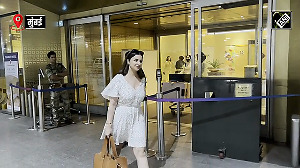A 54-foot interceptor shot out of an underground silo at Vandenberg Air Force Base on the central California coast 17 minutes after the mock warhead was launched from Kodiak Island, Alaska. The test was a "total" success, said senior Pentagon officials.
"...it exceeded even our primary objective on the test. And we also met all the secondary objectives of the test, the Director of the Missile Defence Agency," US Air Force Lieutenant General Henry Obering told reporters in Washington.
"Basically, what we did is a huge step in terms of our systematic approach to continuing to field, continuing to deploy and continuing to develop a missile defense system for the United States, for our allies, our friends, our deployed forces around the world," he said.
The interceptor carried a "kill vehicle" that locked on to the approaching mock enemy missile and flew into the 4-foot-long warhead at 18,000 mph with both disintegrating some 100 miles above the earth.
The interceptor's flight is said to have lasted 13 minutes. One of the objectives of the test was to see if the "kill vehicle" could get close to the warhead with a view to testing the tracking and sensor systems that would be used in a real missile attack.
According to Defence Department officials the interceptor was launched by remote control from a command center in Colorado.
The test also was the first use of an early warning radar at Beale Air Force Base, California., to provide the data required to put the interceptor on a proper path toward its target.
There have been nine intercept tests since 1999, and five were successful in hitting the target and the latest success came after two failed efforts in December 2004 and February 2005.
"We think we're on the right track.... This is a major portion of our missile defense system but it is not the only portion of our missile defense system. And in fact this intercept now is the fourth in the last 90 days of a hit-to-kill intercept using our ballistic missile defense system," he said.
The Missile Defence Agency Chief was asked the probabilities of bringing down long-range North Korean missiles. "I think we have a good chance... And it's one that I feel safer and sleep better at night."







 © 2025
© 2025